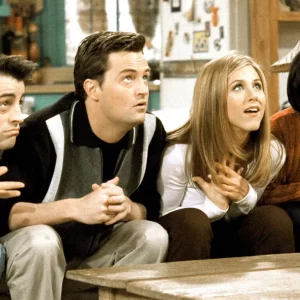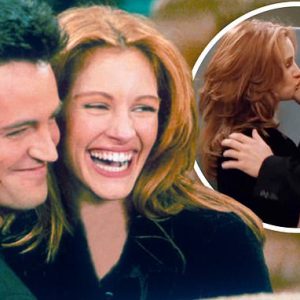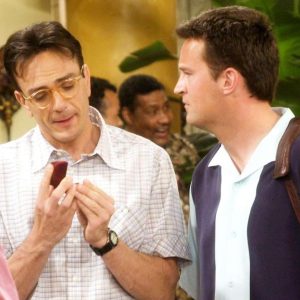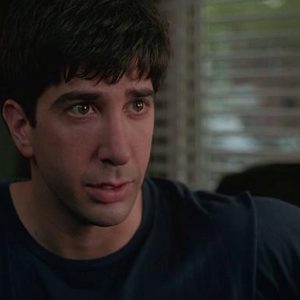On a warm evening in May 2004, Times Square transformed into an emotional hub as thousands gathered to witness the end of an era.
Friends, the sitcom that had defined a generation, was airing its final episode, and New York City, the iconic backdrop of the show, became the perfect place for fans to say goodbye. Massive screens loomed above, and for once, the typical ads and flashing lights were replaced by the familiar faces of Monica, Chandler, Ross, Rachel, Joey, and Phoebe. Fans from across the city—and even the world—stood shoulder to shoulder, their eyes glued to the screen, ready to savor the last moments of the show that had been with them for ten seasons.
Some people wore T-shirts emblazoned with their favorite quotes, while others clutched tissues, bracing for the inevitable tears. It wasn’t just an episode; it was the end of an emotional journey. Over the years, Friends had woven itself into the fabric of everyday life. The characters felt like actual friends to the viewers, sharing in their joy, laughter, heartbreaks, and triumphs. For many, this wasn’t just television—it was a cultural phenomenon that mirrored their own lives.

As the episode unfolded, the crowd reacted in unison—laughing at the humor they had come to expect and growing silent in the more tender, poignant moments. The sense of community was palpable. When the camera panned over the iconic purple door of Monica’s apartment for the last time, many couldn’t help but shed a tear. The reality of the show’s ending hit hard, as did the realization that the moments shared with this on-screen group were now memories.
The final scene, when the friends left Monica’s apartment keys on the counter, symbolized more than just a move; it marked the end of an era. As the closing credits rolled and the familiar theme song “I’ll Be There for You” played one last time, the crowd clapped, cheered, and wiped their eyes. This moment in Times Square wasn’t just about the finale—it was a collective acknowledgment of the impact Friends had on pop culture and its lasting legacy.
In that bustling square, it became clear that Friends wasn’t just a TV show; it was a connection that had brought millions together, whether in living rooms, coffee shops, or crowded streets like this one. That night in Times Square, the spirit of friendship, much like the show’s title, lived on, etched in the hearts of fans who knew that no matter how many years passed, Friends would always be there for them.




